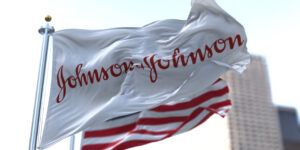 Severe weather and the hefty insured losses that followed helped produce a 26.6 percent plunge in U.S. property/casualty insurers’ net income during the 2016 first quarter, a new industry study has determined.
Severe weather and the hefty insured losses that followed helped produce a 26.6 percent plunge in U.S. property/casualty insurers’ net income during the 2016 first quarter, a new industry study has determined.
The Property Casualty Insurers Association of America, and ISO, a Verisk Analytics business, calculated $13.3 billion in net income after taxes for private U.S. P/C insurers during Q1. That compares to a much-higher $18.1 billion figure from the 2015 first quarter.
PCI/ISO blamed, in part, higher catastrophe losses and less favorable reserve development. This trend also produced an industry-combined ratio of 97.5, which deteriorated from 95.7 over the same period last year. But higher cat losses are only part of the story, said Beth Fitzgerald, president of ISO solutions.
“Insurers were affected by both one-time events and long-term trends,” Fitzgerald said in prepared remarks. “Severe hail in several southern states contributed to the highest first-quarter catastrophe losses in the U.S. since the 1994 Northridge earthquake.”
Direct insured property losses from U.S. catastrophes came in at $4.8 billion during the quarter, versus $3.6 billion in the 2015 first quarter, and $3.1 billion higher than the first quarter direct catastrophe loss average for the previous 10 years, according to the report.
Fitzgerald noted the worsening combined ratio, year-over-year, and continued low interest rates, which helped push “the industry’s quarterly investment yield to its lowest level this century.”
The report found that insurers’ net investment income dropped to just under $11 billion in Q1, down from $11.7 billion in Q1 2015. Additionally, realized capital gains for insurers dropped by half, to $2.3 billion, compared to $4.7 billion a year ago. This resulted in $13.2 billion in net investment gains for the 2016 first quarter, down from $16.3 billion in the 2015 first quarter.
Good News and Some Concerns
Still, net written premiums saw real gains, climbing to $130.1 billion during the quarter, up $4 billion from the $126.1 booked over the same period in 2015. Growth was solid at 3.2 percent, but that’s down from 3.8 percent in the 2015 first quarter.
Also, the industry’s surplus hit $676.3 billion as of March 31, 2016 – a record, jumping $2.6 billion from Dec. 31, 2015.
While net earned premiums grew 3.5 percent to $126.4 billion in the first quarter, loss and loss adjustment expenses climbed 6.3 percent, to $87.1 billion, thanks to higher catastrophe losses, according to the report. That compares to a 1.7 percent increase a year before. Also, other underwriting expenses climbed to $36.4 billion, a nearly 3 percent increase.
PCI/ISO said that net loss and loss adjustment expenses from catastrophes for private U.S. insurers hit $4.9 billion during the quarter, versus $3.4 billion in the 2015 first quarter.
Robert Hartwig, the outgoing president of the Insurance Information Institute, and the I.I.I.’s Steven Weisbart, said in an I.I.I. web site posting that the results reflect both good and bad news.
“The good news: the property/casualty insurance industry was profitable and growing in the first quarter of 2016,” Hartwig and Weisbart wrote. “The bad news is that it was less profitable and growing more slowly” in the 2016 first quarter compared to last year.
They noted in their posting that premium growth may still be modest, but it is “now experiencing its longest sustained period of gains in a decade.”
Robert Gordon, PCI’s senior vice president for policy development and research, said in prepared remarks that “insurers will be very challenged to reach long-term historical returns in the current hyper-competitive market.”
He noted that commercial lines was profitable, and that the personal lines market is growing, but personal lines is “also suffering losses that far outstrip gains.”
Source: ISO/PCIAA





















 Viewpoint: Mapping Evolving Regulatory Terrain for MGAs, MGUs and Other DUAEs
Viewpoint: Mapping Evolving Regulatory Terrain for MGAs, MGUs and Other DUAEs  How One MGU Grew Fivefold When Capacity Fled Cat-Prone Property Markets
How One MGU Grew Fivefold When Capacity Fled Cat-Prone Property Markets  Rebuilding Negotiation Talent: Why This Skill Is Missing and How to Fix It
Rebuilding Negotiation Talent: Why This Skill Is Missing and How to Fix It  The Future of Knowledge in Insurance: From Training to AI-Powered Productivity
The Future of Knowledge in Insurance: From Training to AI-Powered Productivity 




